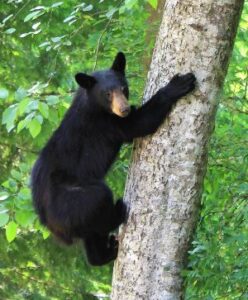 Nature Deficit Disorder
Nature Deficit Disorder
I was strolling through North Kitsap Heritage Park, trailing behind a family of four. Each youngster held a smart phone, and seemed thoroughly engrossed in what was on the screen. (How they avoided tripping over the exposed roots, I can’t imagine.)
Now, had a black bear stood in the way, I’m guessing these kids would’ve walked right around it and kept on going, leaving the puzzled bear to seriously doubt its status as a forest celebrity. As for the children themselves, they probably suffer from a phenomenon known as “Nature Deficit Disorder.”
N.D.D. is a phrase invented by Richard Louv. In his book titled Last Child in the Woods he suggests that a lack of exposure to nature while young ultimately hurts our besieged environment.
But there’s good news too. Last fall, we joined our neighbors to remove a few young alders that were blocking a drainage ditch, disrupting the flow of rainwater back to the bay.
A 12-year-old boy appeared, stopped his bike, and stared. “You can’t take away those trees!” he said. “Didn’t you know? Trees are the lungs of the Earth.” There was a long silence. Finally, a neighbor asked: “How do you mean, Billy?”
“Well, see,” he answered, “trees breathe…sort of…and they live on the carbon dioxide that’s in the air. So they breathe out the oxygen, which they don’t need. All the animals, us too, need that oxygen!” Having delivered a treatise on our planet’s life processes to five speechless adults, Billy looked rather proud of himself.
Hopefully, our schools are doing as fine a job as his. But we can help too, by exposing youngsters to the natural world, exploring our county’s many forest parks, perhaps carrying field guides rather than cell phones. Something as simple as planting a tree together and explaining its contribution to both our atmosphere and to wildlife habitat, can leave a long-lasting impression.
-Nancy Sefton

